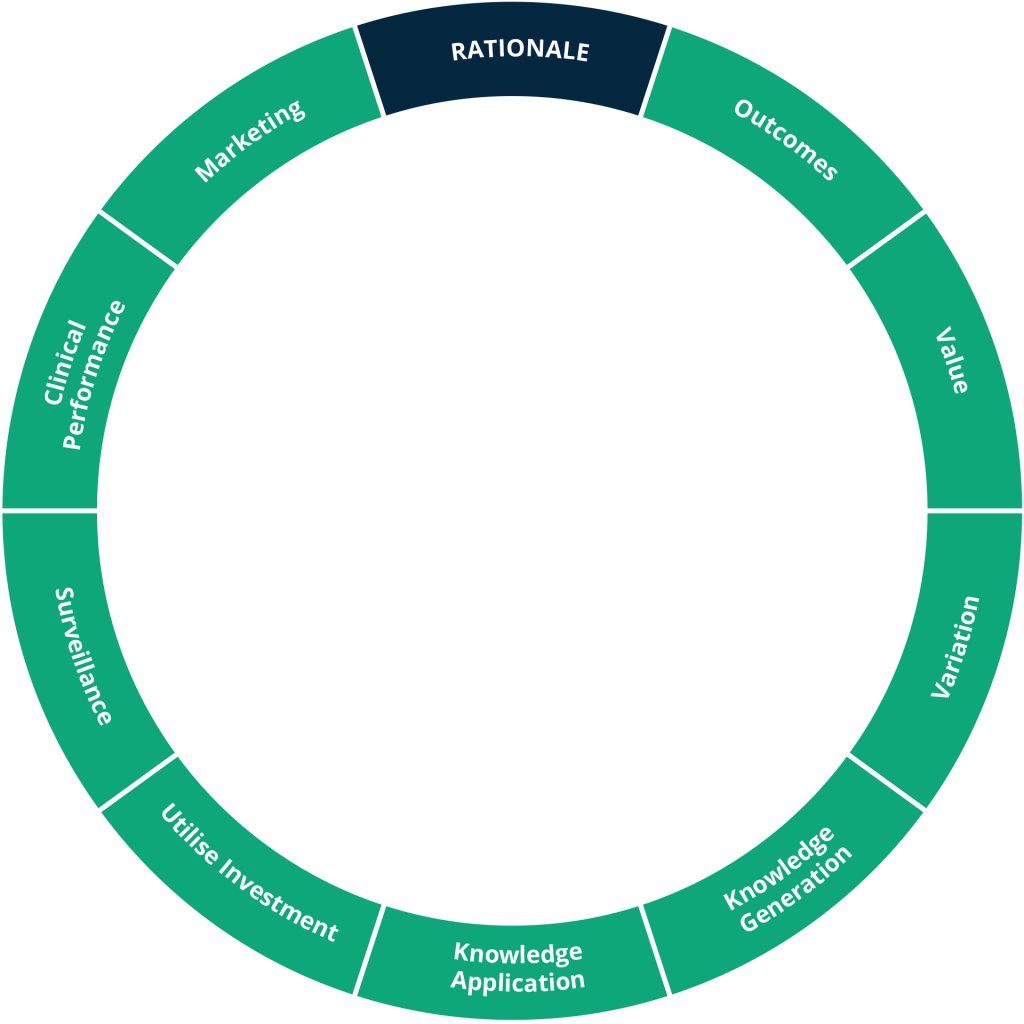
Figure A The Learning Health System Framework.
Our material about Learning Health Systems is organised around the wheel framework above. The fractal nature of a Learning Health System means that conceptually, many of the challenges are the same, whatever the system’s scale – from a local medical practice to an international health system. Each ring of the is described below and can be explored in detail, by clicking the wheel diagram or using the drop down menus above.

Rationale
A Learning Health System is described as a health system in which outcomes and experience are continually improved by applying science, informatics, incentives and culture to generate and use knowledge in the delivery of care. A Learning Health System can also improve value, reduce unjustified variation, support research and enhance workforce education, training and performance.

Technical Building Blocks
At the hub of our framework are the technical building blocks for organisational learning, that enable data generated from practice to create knowledge and for that knowledge to be put back into practice.
Data must be generated from practice (Practice to Data):
It must be captured, stored, accessed and protected. The quality and provenance of data must be ensured, and it must be sharable and understood between settings.
Knowledge must be generated from the data (Data to Knowledge):
There are many ways to generate knowledge. Randomised trials are familiar in clinical medicine, but there is also a range of quasi-experimental analytic methods. Artificial Intelligence is only the latest field to offer methods of generating insight. More traditional engineering approaches also have a role, as do qualitative methods. Knowledge generation cannot be entirely automated and learning communities have a place at the heart of any Learning Health System.
Knowledge must be put into practice (Knowledge to Practice):
It is not enough to publish knowledge in books, journals and reports. It must be put into practice. Clinical guidelines, for instance, can be represented in a standardised, machine-readable and computable form that can guide decision making at the frontline.
Platforms:
While each Learning Health System is a unique and complex system of technologies, people and policies, there are usually common infrastructural elements.
These can often be procured as platforms, freeing the health system to focus on the unique and high-value elements of its Learning Health System.

Understanding and managing complexity in a Learning Health System
Healthcare is complex, a fact that must be reflected in any Learning Health System. The Nonadoption, Abandonment, Scale-up, Spread and Sustainability (NASSS) Framework suggests seven domains in which the complexity of a Learning Health System can be considered: condition/illness, technology, value proposition, adopters, organisations, the wider system and adaptation over time. Considering a proposed Learning Health System within this framework can aid in design, implementation and evaluation.

Strategy in a Learning Health System
A Learning Health System requires strategic direction, a culture of learning and a scientific approach to implementation. Individuals and organisations will have to change their behaviour. It must be co-designed by the stakeholders and continually evaluated.
